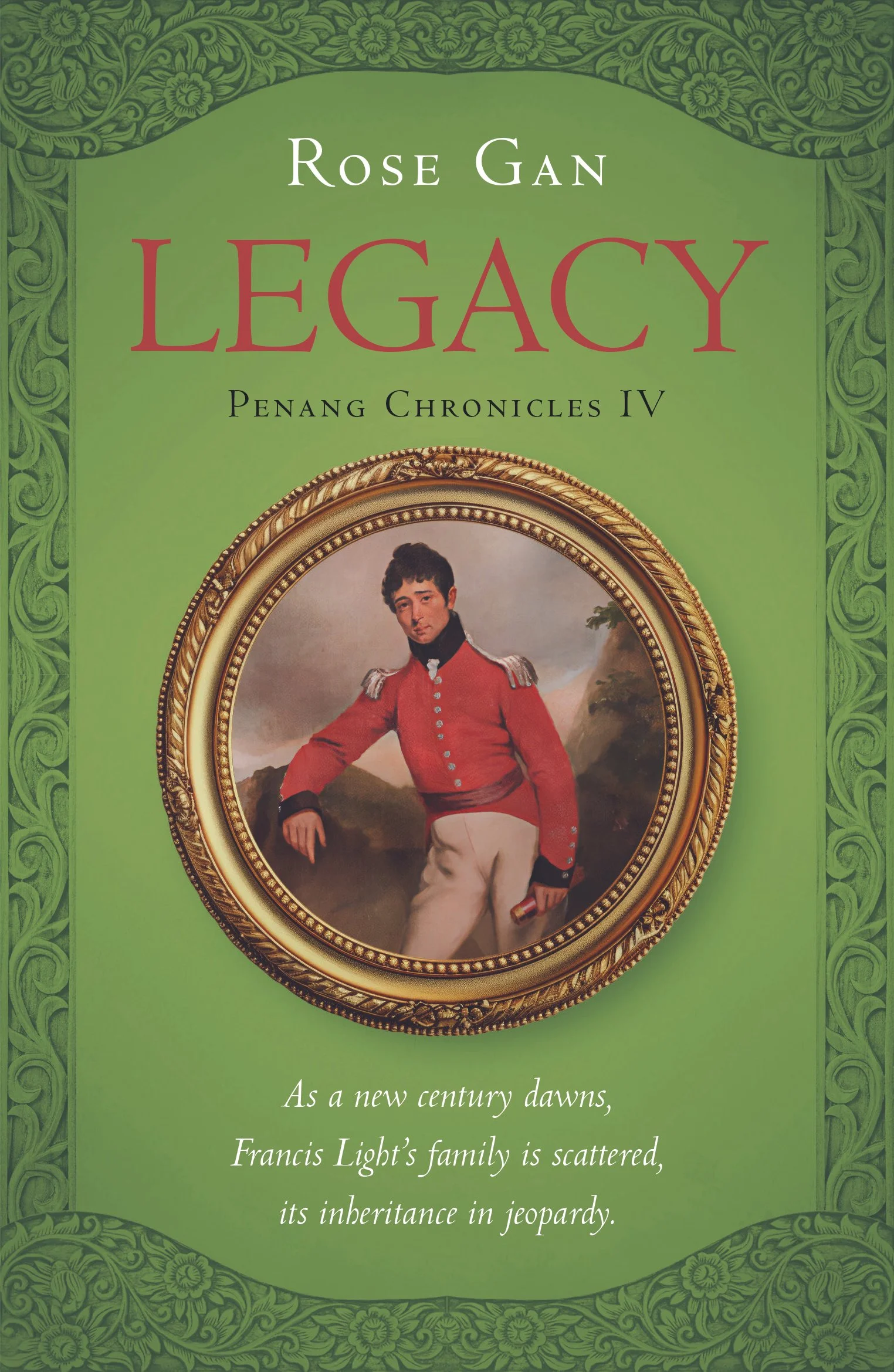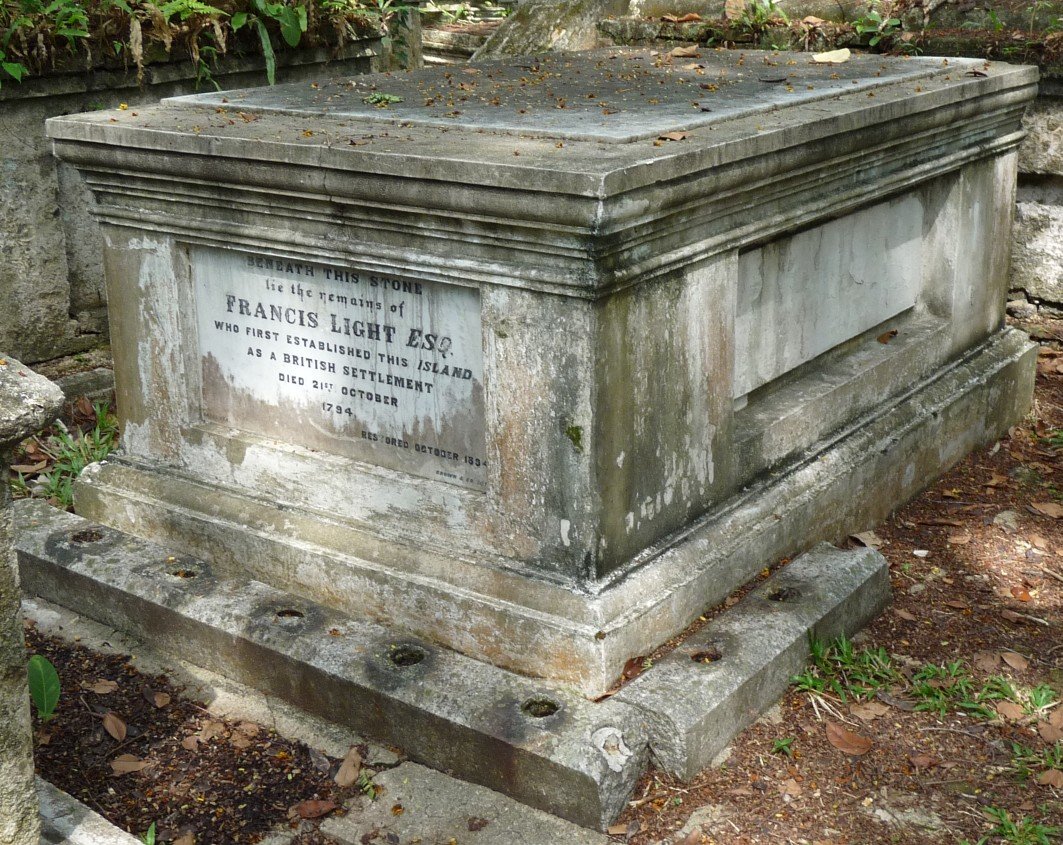Penang Chronicles
Before Raffles, before Rajah Brooke, there was Francis Light, the 18th century trailblazer in the Malay Archipelago. From humble birth in Suffolk, Light struggles against the social prejudices of his day. His subsequent adventures as a Naval officer and merchant sea captain take him from India to Sumatra, the Straits of Malacca to Siam, through shipwreck, sea battles, pirate raids, and tropical disease. But his most difficult challenge is achieving his ultimate dream: to establish a British port in the Indies on behalf of the East India Company.
“Dragon, Pearl and Emporium set the benchmark for historical fiction of the region.”
Marcus Langdon, author of Penang the Fourth Presidency of India 1805-1830
Available Sept-October 2025
About Penang Chronicles
-
It began over twenty years ago when my husband and I lived for two years in Penang while he was working there as a consultant. After many years teaching and with three children at university in the UK, I found myself with an empty nest and at a loose end. Yet I had the advantage of freedom for the first time in years, so I spent the days alone, exploring the streets of Georgetown, becoming increasingly more fascinated by its history. My interest was particularly drawn to Martinha Rozells, the enigmatic partner of Francis Light about whom so little is known for certain. Perhaps I felt some sense of kinship to her at this time in my life as I adapted to my husband’s home, so different from my own in the north of England. How had Francis Light and Martinha Rozells negotiated their relationship more than two hundred years before if it was still a challenge today?
On the way, I must confess, I became intrigued with Francis Light himself whose life story is improbably rich in incident most of which is not generally known. Whatever we might think about the coming of colonialism and all its concomitant issues, men like Francis Light were an special breed who risked all to make their fortunes in the cosmopolitan trading world of the Straits of Malacca. Many died young of tropical disease, shipwreck or violence; it was a harsh environment in which to ply one’s trade. Most have disappeared into history and an early grave. To survive and succeed as Francis Light did, it required courage, ruthlessness and adaptability, all of which qualities he seems to have possessed in abundance. For an illegitimate boy from Suffolk to one day be the governor of a British port in the East was no mean achievement.
Thus my novel about Martinha grew and expanded its horizons, ultimately requiring a quartet and a host of characters to tell the tale. But at the heart, this is still a story of a man and woman from two very different worlds, –the Dragon and the Pearl– and the Straits as they knew it.
-
And so the journey began. At first, as an historian, I toyed with the idea of writing a biography of Martinha, but evidence is so scant that it soon became abundantly clear that only a novelisation of her story was possible. Martinha would have to be fashioned from the ground up from the scant and contradictory references that are all we have and a healthy dose of imagination based firmly on the historical sources for the Malay Archipelago at the time.
To do justice to Martinha – and all the forgotten women whose lives were significant but are unrecorded in history – I would first have to bury myself in the period to soak up as many of its stories, events, attitudes and flavours as possible. What followed was a deep dive into a myriad of different sources, often so fascinating and obscure that I was in danger of disappearing down these virtual rabbit holes and never actually writing my novels.
Until along came Covid and I suddenly found myself, as did the rest of the world, in not-so-splendid isolation but with endless hours in which to bury myself in the late 18th century. Silver linings indeed, it would seem.
-
The Straits is in crisis, beleaguered by the Dutch, the Bugis, and the clash between Siam and Burma. Enter Francis Light, country captain. We follow Francis through the Navy until he joins the Honourable Company and spends twenty years making his fortune in the Straits of Malacca, building strong connections with local rulers. His ultimate aim, however, is to establish a British outpost. Ultimately, he fails, but retains his local patronage and settles instead for fortune rather than fame, aided by a fortuitous marriage to a young local woman of noble birth. But he hasn’t yet forsaken his ultimate dream.
The Protagonists:
State of Francis Light, Fort Cornwallis, Penang 1936 to commemorate the 150th anniversary of the settlement
Light’s tomb in the Old Protestant cemetery
George Town, Penang
Francis Light 1740-1794 ‘The Dragon’
Raised in Woodbridge by Sir William Negus and Mary Light, Francis attended the prestigious Woodbridge School before joining the Royal Navy where he attained the rank of lieutenant. His illegitimacy ultimately proved an obstacle to advancement in the navy, so in 1765 he went to India, where he found employment as a country ship captain.
Light spent many years as a trader in the Straits of Malacca during which time he became an intimate of many local rulers and people of influence in the region. In 1772 Light formed a relationship with Martinha Rozells a Siamese Eurasian woman at the court of Kedah. They spent over twenty years together based both in Phuket and Kedah and had five children.
Eventually he caught the interest of the East India Company when he proposed the island of Penang as a suitable location for a British port to rival Dutch Malacca. Penang, owned by the sultan of Kedah became a bargaining chip for the beleaguers sultan; Light made many promises to gain his prize without Company sanction.
In 1786, Light raised the British flag on the beautiful island of Penang in these somewhat dubious circumstances. The new settlement was an immediate success and within a matter of years it was a thriving emporium with a growing population of 10,000. However in 1791, Light faced attack from a coalition of Malay sultans and was forced to fight to keep his island. Ultimately the British were victorious; Penang became the first British possession in the Straits.
Francis Light died of malaria in 1794 at the age of 54. He never returned to England.
Portrait of a Malay woman by Robert Home
(1752-1834)
Portrait of an Eurasian lady by George Chinnery (1774-1852)
Martinha Rozells c.1756-c.1822 ‘The Pearl’
Martinha Rozells remains an enigma who has frustrated historians for a very long time; almost no reliable information has survived about her origins and life. Yet it is evident she was a woman of some standing in her community whose influence on Francis Light can be sensed behind of many of his actions.
Three facts are variously quoted about Martinha: she was a daughter of the sultan of Kedah, thus a Malay princess; she was a Nyonya lady who met Light as the ambassador of the same sultan; and she was a Catholic Eurasian from Phuket (Jangsylan). Even her birth and death dates are estimated. The name Thong Di is somehow associated with her: it is either her Siamese name, or that of her mother or a sister. So much about Martinha is contradictory , quite likely based on hearsay and rumour, that it is almost impossible to give her biographical details with any certainty. The two portraits shown here have at various times been claimed to represent her. Probably neither are of her, but their marked differences only add to the conundrum that is Martinha Rozells.
Whether she married Light under Muslim rites in Kedah, at a Catholic Church in Phuket, or remained (as his will implies) his common law partner, we will never know. It is worth pointing out, however, that the East India Company at this time looked unfavourably on marriages between their officers and indigenous women (although mistresses were accepted!) Furthermore a Catholic ceremony would never have been tolerated in Company circles. Yet, Francis and Martinha were undeniably a couple for 22 years and had five children together: Sarah, Ann, Mary, William and Francis, all of whom went on to have significant lives within British society.
Francis Light’s will bequeathed everything to Martinha but she did not receive all that was due to her. Ultimately she was forced to sell much of her property and take the will to court to try and establish her rights. In 1799 Martinha married again to a Dutch settler, Augustus John Timmer. They had two daughters but Martinha and the children were subsequently abandoned. Four of her children by Light grew up overseas: William in Suffolk, while the three girls lived in Calcutta where they all married and settled. Only the youngest child, Francis Lanoon Light, remained with her on the island.









